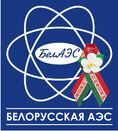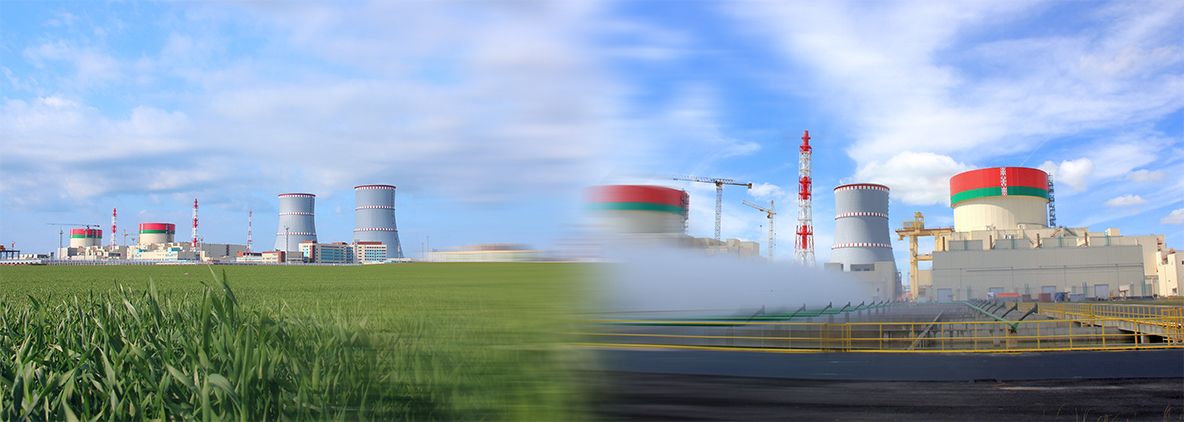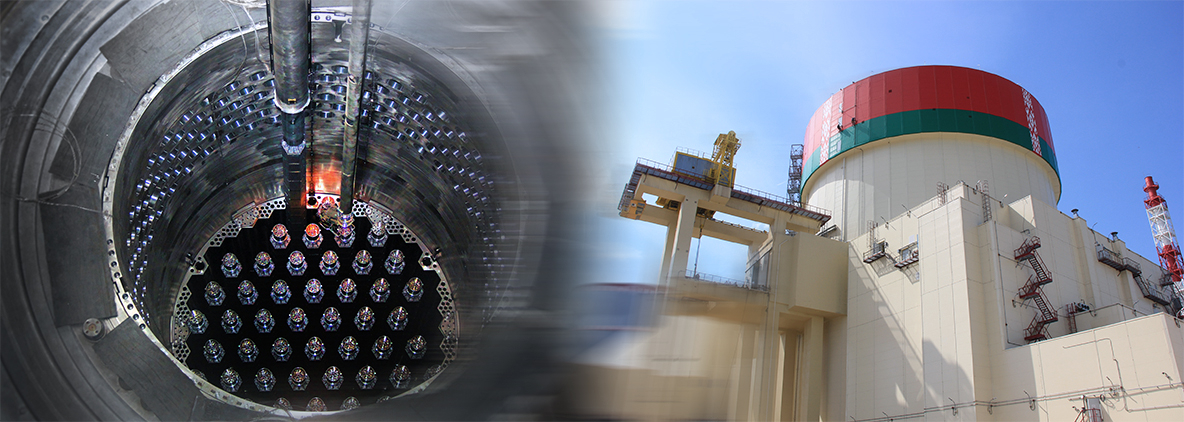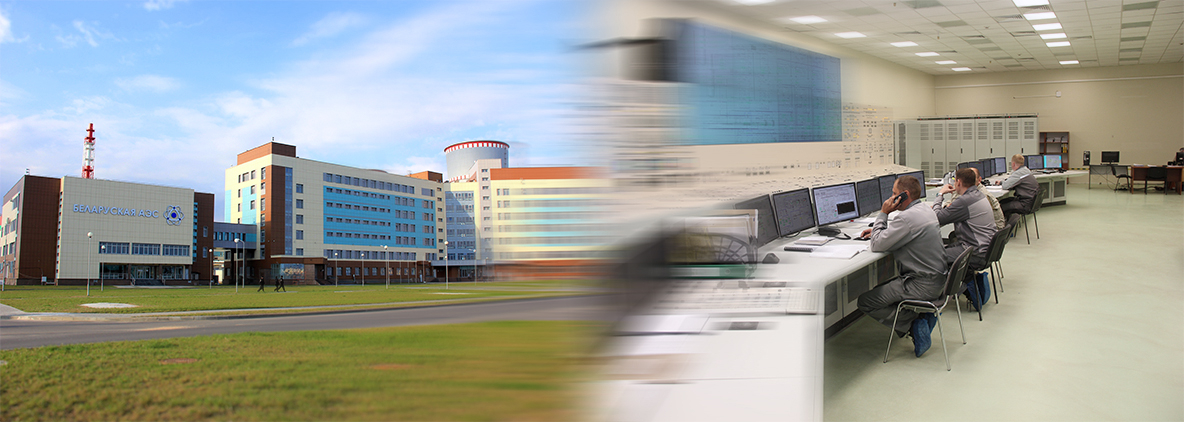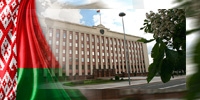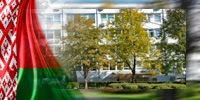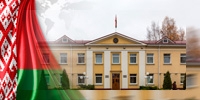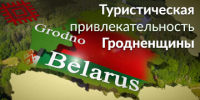Belarus honors nuclear safety commitments
Legal foundation
The Republic of Belarus is party to international treaties and conventions, which are related to nuclear and radiation safety, and fulfills the measures they stipulate.
The number includes:
- Joint Convention on the Safety of Spent Fuel Management and on the Safety of Radioactive Waste Management;
- Convention on Nuclear Safety;
- Agreement between the Republic of Belarus and the International Atomic Energy Agency on using safeguards in view of the Nuclear Weapons Non-Proliferation Treaty of 31 August 1995;
- Convention on the Physical Protection of Nuclear Material;
- Convention on Early Notification of a Nuclear Accident and Convention on Assistance in Case of a Nuclear Accident or Radiological Emergency;
- Nuclear Weapons Non-Proliferation Treaty;
- Vienna Convention on Civil Liability for Nuclear Damage;
- Convention on Access to Information, Public Participation in Decision-making and Access to Justice in Environmental Matters;
- Convention on the Environmental Impact Assessment in a Transboundary Context.
Honoring commitments in practice
The Republic of Belarus fully honors its commitments resulting from the abovementioned treaties and conventions. Every month nuclear materials and plants of the Republic of Belarus are inspected together with the IAEA.
National reports on fulfilling the Convention on Nuclear Safety and the Joint Convention on the Safety of Spent Fuel Management and on the Safety of Radioactive Waste Management have been compiled and presented.
Control over the export of fresh and irradiated nuclear fuel of the movable nuclear power plant Pamir 630D to the Russian Federation has been enabled as well as the import of low-enriched nuclear fuel for research apparatus of the state-run United Nuclear and Energy Research Institute Sosny.
Important facts in brief:
Non-proliferation of nuclear weapons is an important task, which requires international cooperation and stronger trust at all levels – the bilateral, regional, and global ones. The Nuclear Weapons Non-Proliferation Treaty of 1968 is one of the instruments used to achieve the goal.
Belarus has been party to the Treaty since 1993. In line with the Treaty as a non-nuclear country Belarus undertakes not to make or purchase nuclear weapons or other explosive nuclear devices. Belarus undertakes not to solicit or accept aid in manufacturing such devices. In line with the Treaty Belarus undertook to sign the agreement with the International Atomic Energy Agency (IAEA) to enable IAEA control over all the nuclear materials and prevent their use for manufacturing explosive nuclear devices.
The agreement between the Republic of Belarus and IAEA on using safeguards in view of the Nuclear Weapons Non-Proliferation Treaty (the agreement on safeguards) came into force in 1995. In line with the agreement Belarus declared the location, characteristics, and the usage of all the nuclear materials and the equipment that uses the materials. Belarus undertook to enable IAEA inspections of all such nuclear materials and equipment.
Since its inception the system of IAEA safeguards has been growing stronger thanks to regular introduction of new methods and ways to raise its effectiveness and functionality. In 1997 the IAEA worked out a supplementary protocol to the agreement on safeguards.
Source: Nuclear and Radiation Safety Department of the Belarusian Emergencies Ministry
The scheme of the power unit and safety systems of the Project NPP-2006 are notable for enhanced safety features and technical and economic indicators and fully complies with international norms and IAEA recommendations.
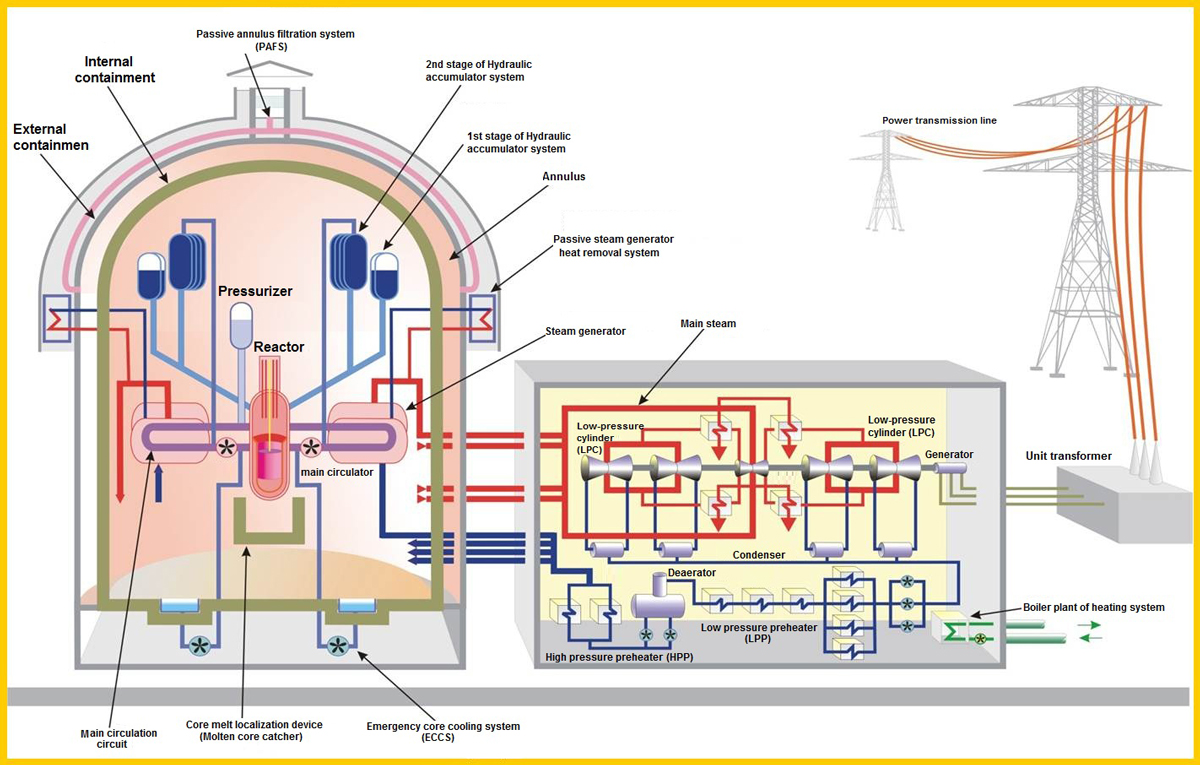
The project uses the latest tools and safety systems: four-channel safety systems (overlapping), melt localization device, double containment of the reactor building, hydrogen removal system, passive heat removal system; protection of the power plant from external influences is provided.
The high degree of safety of the Belarusian nuclear power plant is provided by many factors. The main of them are the principle of self-protection of the reactor system, the presence of several safety barriers and multiple overlapping of safety channels. It should be noted also the use of active (ie, requiring human intervention and the availability of energy sources) and passive (not requiring the intervention of an operator and an energy source) safety systems.
The safety system of modern Russian nuclear power plants consists of four barriers to the spread of ionizing radiation and radioactive substances in the environment. The first is a fuel matrix which prevents the release of the fission products under the fuel cladding. The second is the very fuel cladding, giving no fission products into the coolant to get the main circulation circuit. The third is the main circulation circuit, which prevents the output of the fission products under the protective hermetic shell. Finally, the fourth is a system of protective hermetic covers (containment), excluding the release of the fission products into the environment.
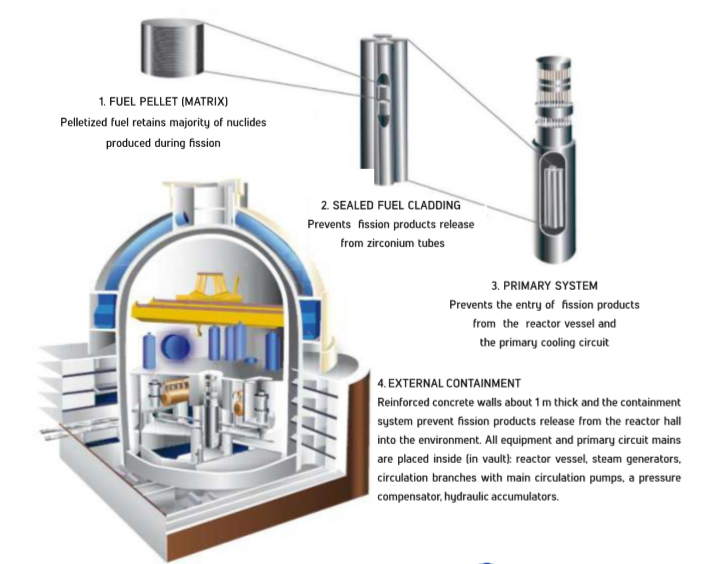
If something happens in the reactor hall, all the radioactivity will remain inside the shell. Containment stands the internal pressure of 5 kg/cm2 and an external impact from the shock wave, creating pressure of 30 kPa, and the incident plane. That is, assuming that all the water supplied into the reactor turns into steam and, like in a giant kettle, will press on the cover from within, the cover will withstand this tremendous pressure also. Thus, the dome of the power unit is as if in constant readiness to stand in the breach from within. For this purpose, the cover is made of "prestressed concrete": metal wires, strung inside the concrete cover, make the structure stronger, increasing its stability. The volume of the containment is quite high – 75.000 cubic meters; the risk accumulation of hydrogen therein in explosive concentrations is considerably smaller than on NPP "Fukushima-1". In case of a crash, to reduce the vapor pressure inside the containment, a "sprinkler system" is mounted, which sprays a solution of boron and other substances from under the dome unit that prevent the expansion of radioactivity. At the same place hydrogen recombiners are installed, which do not allow this gas to accumulate and exclude the possibility of an explosion.
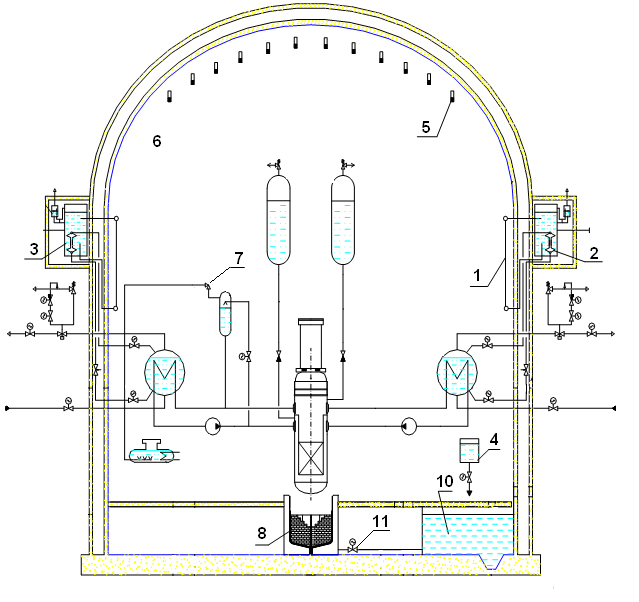
1, 2 – passive heat removal system;
3 – emergency water tanks;
4 – emergency chemical feed system;
5 – hydrogen recombiners;
6 - hydrogen concentration monitoring sensors;
7 – safety valves;
8 – core catcher;
9 – water supply system;
10 – borated water storage tanks of JNK system;
11 – fittings on the core catcher communication line and JNK tanks.
